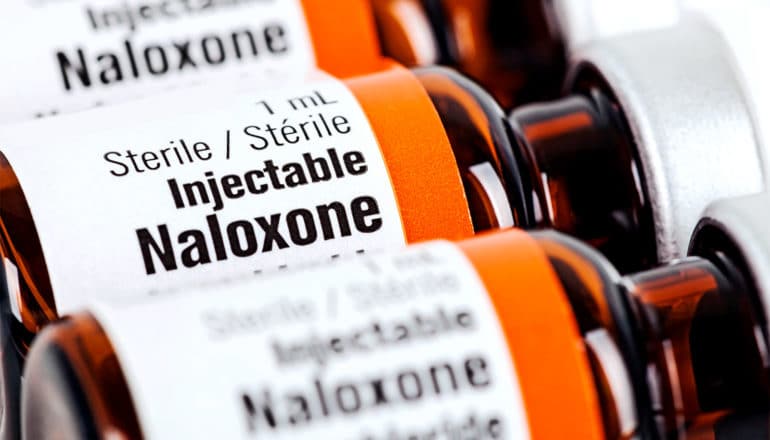
Only a tiny minority of people at risk for an opioid overdose actually get a prescription for naloxone, a drug that could save their lives, a new study suggests.
Further, the odds that some of the most at-risk groups, including those who have already survived a previous opioid overdose, will have a dose of the rescue drug on hand remain very low.
In all, less than 2% of people who had at least one of the main risk factors for opioid overdose had filled a prescription for the life-saving drug naloxone in the last six months of the study period. The percentage was no higher for those who had already survived an opioid overdose or had a formal diagnosis of opioid use disorder, some of the most concerning risk factors for overdose.
This means that those prescribing naloxone, which can reverse an overdose of any type of opioid, from prescription pain medicines to heroin, may miss a large proportion of those at highest risk, researchers say.
For the new study in the Journal of General Internal Medicine, researchers used data from a national sample of people covered by private health insurance.
Who should have a naloxone prescription?
National guidelines issued in 2016 from the Centers for Disease Control and Prevention call for physicians to prescribe naloxone to anyone who takes high doses of opioid pain medicine and to anyone who has other major overdose risk factors including a history of opioid use disorder or opioid overdose.
People who take opioids at the same time they take a type of sedative called a benzodiazepine should also receive it, because the two drugs can interact.
Opioid overdose can occur when someone takes too much of an opioid-containing drug accidentally or on purpose, or when an opioid interacts with another prescription drug, alcohol, or an underlying health condition. Naloxone, given using an injection or nasal spray, can reverse the effects of the opioid.
While the new study shows that naloxone prescription fills from adults with private health insurance rose during the study period from January 2014 to mid-2017, the percentage of patients receiving it remains very low.
“The vast majority of naloxone prescribing is to patients who have received opioid prescriptions, but there are other groups at high risk for overdose but not receiving prescription opioids, including people using only street drugs, that warrant further attention,” says Lewei (Allison) Lin, an addiction psychiatrist at the University of Michigan Addiction Center.
“Over the course of the entire study period, we also found that although both high-dosage opioid prescriptions and having an opioid use disorder were associated with receiving naloxone, the same wasn’t true for those with a history of overdose or those with other substance use disorders,” she says. “Further work is needed to help guide naloxone prescribing to patient populations at highest risk for overdose.”
Community distribution
During the study period, many states enacted “standing orders” for naloxone that allow anyone to receive a dose of it from a pharmacist, to have on hand in case they or someone near them experiences an opioid overdose. Community-based naloxone distribution programs also grew during the study period.
The researchers used anonymous insurance data, including outpatient pharmacy prescription fills, to do the study.
In addition to documenting overall trends in naloxone prescription fills, they performed a detailed comparison of two subsets of patients: nearly 4,000 people who had filled both an opioid prescription and a naloxone prescription during the entire study period, and more than 19,815 who had filled only an opioid prescription during that time.
The study data included all prescriptions filled and billed to the private insurance plans that contribute data to the Clinformatics database the researchers used, so it wouldn’t include naloxone received from community locations or pharmacists but not billed to insurance. The Clinformatics database draws from all 50 states.
Source: University of Michigan
The post Most people who need anti-overdose drug don’t get it appeared first on Futurity.
from Futurity https://ift.tt/30aG3uV
No comments:
Post a Comment